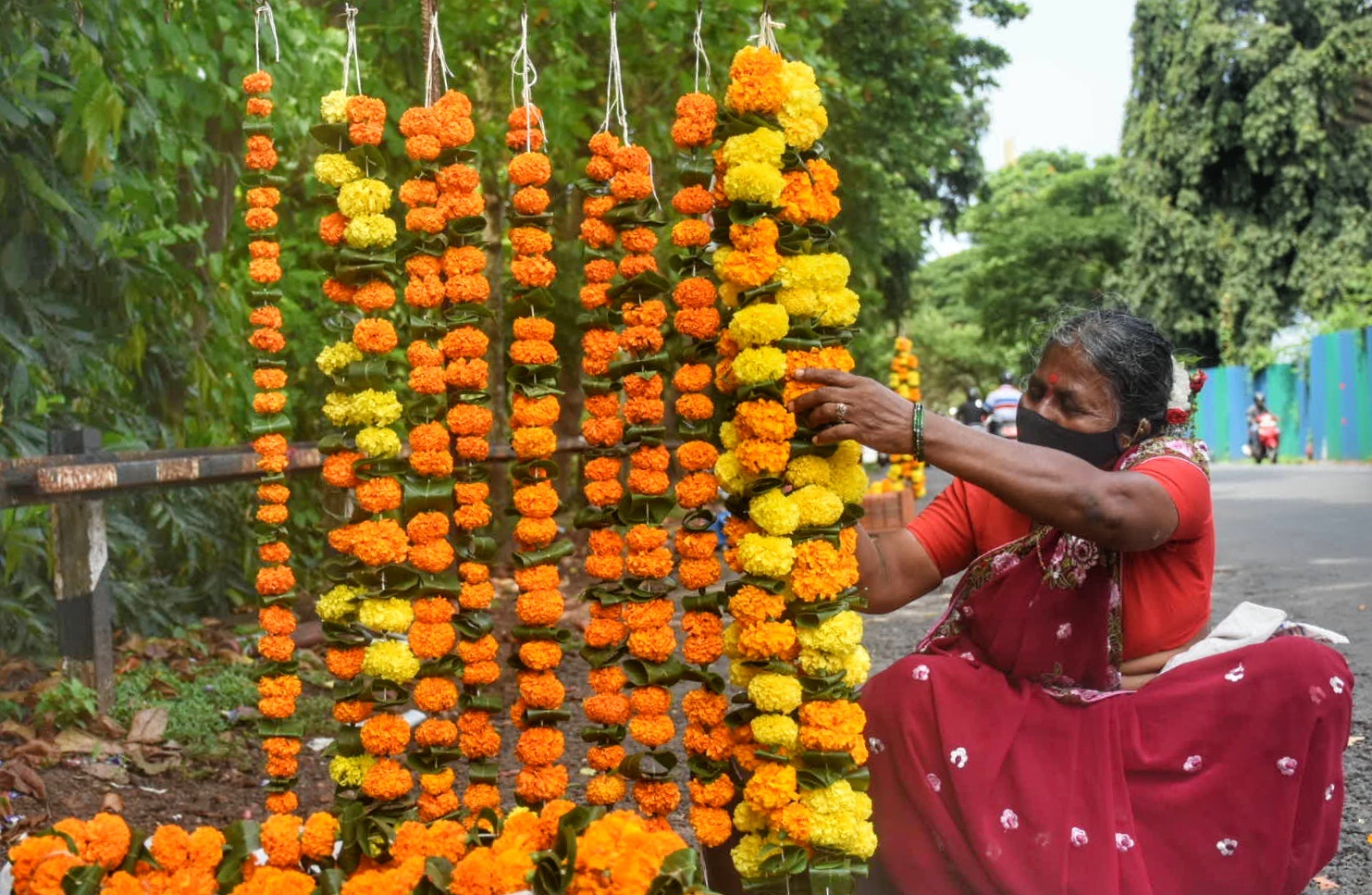
PANAJI
Marching towards the goal of becoming ‘Swayampurna’, Goan farmers are hoping to produce enough marigolds to meet the festive demand. The most common flower grown in the State, and the favourite one for festivals, marigold or ‘rosaan’ as it is popularly known, has now taken to commercial cultivation.
With over 250 farmers partaking in the process of producing around 500 tonnes of marigold annually, they will still fall short to meet the State's demand of around 2,500 tonnes. The local produce is only one-fifth of the total demand during the festive seasons as the rest is being replenished from the neighbouring States -Karnataka and Maharashtra. However, as Chaturthi is approaching, they are all set to contribute their bit to be a part of the demand and supply chain.
The flower, which has an auspicious value associated with it, is in huge demand during most religious festivals including Ganesh Chaturthi, Dussehra and Diwali, apart from special occasions like weddings and opening ceremonies of establishments, stage decorations and election victory celebrations.
“We usually purchase from the local market, but the large-scale cultivation is outside Goa. Goans use marigold for every occasion to tie at the entrance of the homes, factory, shops, offices and vehicles, especially during Dussehra,” shares Govind Desai, founder, Cotyar Beverages, Cuncolim.
Goa’s flower trade would touch the benchmark of Rs 50 crore before the pandemic, but the major share goes to exotic flowers and not marigolds. Hence, the local floriculturists were not so keen on cultivating marigolds until the agriculture department took the lead and motivated them. With the joint support of the regional agricultural office in Valpoi and ATMA (North), farmers in Sattari taluka have put a lot of hard work into marigold production this year.
“Agriculture department has been very supportive in our farming endeavours and provides training on marigold cultivation apart from offering subsidy on our produce,” stated a farmer.
Over-a-dozen farmers are planning to contribute sizably to the festive demands of marigold. Among them are Udaysingh Rane, Dilip Desai and Shashikant Desai (all from Advoi), Virendra Majik, Nanda Gawas and Gurudas Majik (all from Keri) have cultivated marigold on their farms.
Suresh Naik (Thane), Prakash Paryekar (Pali), Laxman Gawas (Satrem), Kalidas Salelkar (Kumthal), Shivaji Desai (Sanvordem), Yogesh Desai (Guleli) and Sadanand Gaonkar (Honda) are taking up commercial crop of marigold. Zogati farm (Bhironda), Samarth Navjivan farm (Satre) and Muktai (Brahmakaramali) are also into commercial production.
Then there are women farmers – Pooja Mayekar, Pratiksha Kavlekar and Sheetal Mhapsekar from Nachinola who have been cultivating marigold since 2018 and reaping a golden crop every year. However, domestic production is indeed far too little than the actual demand in the market. But, the Goan farmers are hoping to produce sufficient quantity in the next few years, making Goa ‘Swayampurna’ in the real sense.
Pointing out the advantages of sowing marigold, Sheetal Nagvenkar, a nursery owner at Calangute stated that the marigold plant has medicinal properties and it also protects other plants from insects, if planted as fencing around them. So, apart from the festive demands, the flowers and leaves also have demand in herbal medicine and Ayurvedic concoctions!
The simple plant requires little attention and is cheap to maintain. The mature seeds can be used to sow, and the saplings need to be transplanted. Some trimming and soil conditioning is enough for a good yield. If the upper tip is nipped, the plant becomes bushy and bears many flowers. The government provides a subsidy for purchasing hybrid seeds supplied by the agriculture department. The flowers are sold between Rs 120-160 per kg in the market.
Goa has hectares of agricultural land with comparatively little farming activities despite the schemes offered by the government. Thankfully, with examples of success stories witnessed across the State, many are returning to their roots.